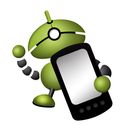
Currently, iOS platform is the most popular among the users. The software vendors create diverse products for this platform. There are a lot of myths about Apple company and its products.
The end users can get acquainted with them on the Internet. But mobile application testing for the iOS platform causes a great number of questions and confusions as among the end users as among the testers themselves, especially with low experience in this sphere.
What Are the Common iOS Testing Myths?
- iOS testing and Android testing - the same things. It is hard to believe but still some people do not see the difference between these platforms.
- iOS testing on emulator will be enough for effective application checking.
- Only applications with a vast number of features will be popular among users.
iOS is an Apple’s company product, and Android - Google’s company. These are two absolutely different systems with a certain architecture, logic, functions, and so on. For testing the products for these two platforms, various test frameworks, programming languages, and test environment will be required.
UI testing, functional testing or system testing, performed on emulators, will not fully correspond to the facts as emulators’ characteristics are kind of limited. This may be hardware limitations (sensor, cameras, microphone), interface display speed, API limitations. Besides this, the emulators may not support some frameworks (Store Kit, Media Player, and so on.).
The more functions are in the application, the higher probability of a bigger number of bugs and the more difficult it will be to fix them. The product success depends not only on capabilities but also on a big number of factors.
